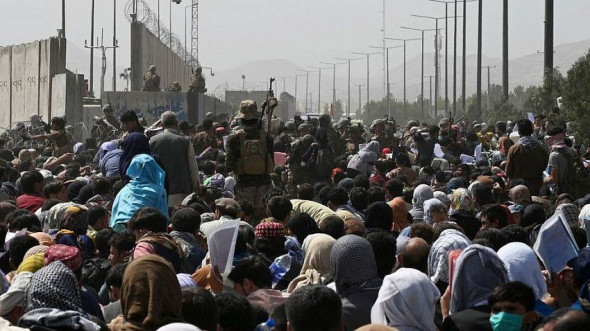After Osprey Parts Fall Off, All Aircraft Flights Should Be Suspended
Even though the fallen piece is still missing, and there is no explanation of why the accident happened, the U.S. military has continued Osprey flights. The U.S. military did not even report the most basic facts of the incident promptly, let alone observe safety control and preventative measures.
The Japanese government, which should protect citizens, has been unable to thoroughly enforce safety measures with respect to the U.S. military. In order to protect the lives and property of prefectural citizens, the government has firmly asked for the immediate suspension of all Osprey flights and foreign aircraft training flights around the military bases in Okinawa.
Around 9:30 p.m. on Aug. 12, the panel and cover fell off during a flight between the Central Training Area and the airfield situated across Camp Schwab and Camp Hansen. But nearly a day passed before the accident was reported on the evening of Aug. 13.
Aug. 13 marks exactly 17 years since a U.S. military helicopter crashed at Okinawa International University. Once again, the risk posed by this airfield is on display.
The continuing troubles at Futenma are not just limited to the Osprey. On June 2, at Tsuken Island near Uruma City, a UH-1Y military helicopter made an emergency landing. On July 13, at Tonaki Island, a large transport CH-53E helicopter dropped a military-use container. On July 27, an AH-1Z attack helicopter heading for Futenma made an emergency landing at Kushima City in Miyazaki Prefecture.
In 2003, after observing Futenma from the air, Donald Rumsfeld, known as a hard-line U.S. secretary of defense, declared it to be the most dangerous base in the world. Former Okinawa governor Hirokazu Nakaima promised to terminate operations at MCAS within five years. But the February 2019 deadline passed, and the airfield is still in use.
The hazard has been ignored, and the government has not acted on its promise to the prefectural citizens. The airfield, with its frequent emergency landings and the equipment that keeps falling from defective and decrepit aircraft, ought to be shut down.
The Japanese government's failure to take a firm stand against the U.S. military seemingly is related to the previous Shinzo Abe administration's course of integration with the U.S. military.
On Aug. 15, at a national memorial service for fallen soldiers for the first time since assuming office, Prime Minister Yoshihide Suga delivered a ceremonial address that clearly detailed a message of proactive pacifism. These remarks followed precedent-setting action by Abe during a ceremonial address that made it possible to exercise the right to collective self-defense, something which conflicts with Japan's constitution. Does this "proactive pacifism" that Abe and Suga spoke of really mean changing from a nonaggressive defensive policy to making Japan into a country that is capable of attacking military bases and waging war together with the U.S.?
Aircraft that have taken off from Futenma have crashed and dropped parts. While citizens' lives and property are being put at risk, the government is flaunting "proactive pacifism."
We would like to ask Suga whether the purpose of "proactive pacifism" is to saddle Okinawan citizens with such a heavy burden. What does Suga mean when he talks about "understanding the people?”

